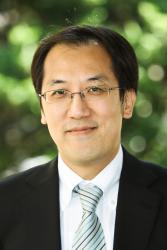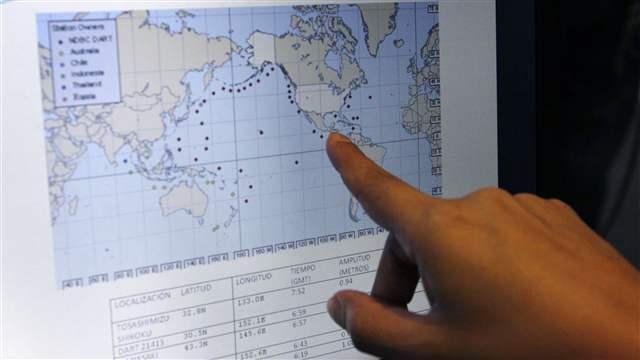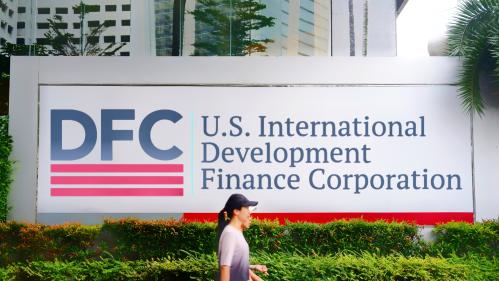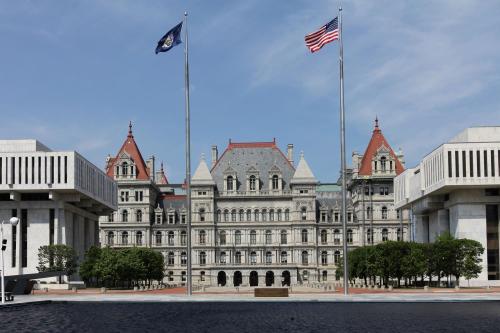The Japanese archipelago is one of a number of regions that has been vulnerable to frequent natural disasters. Through its history, tragic experiences have accumulated, and the modern Japanese society and each individual in the country have learned lessons from each of those occasions. Based on these experiences, the Government of Japan has globally disseminated the spirit of “BOSAI,” a Japanese word meaning disaster reduction efforts, in its foreign aid menu.
Central America is an important target area for Japan’s BOSAI assistance. Because of geographical and geological reasons, the region―located in the rim of the Pacific Ocean as Japan is―faces substantial risks of storms and floods, mudslides, earthquakes, and volcanic eruptions. The countries in this region have strived in the past decades to cope with these chronic problems not only at national level, but also at the regional level. One of the fruits of the efforts made by those countries is the establishment of the Coordination Center for the Prevention of Natural Disasters in Central America (CEPREDENAC). However, they still need support from the international community. Upon request by Central American countries, Japan implemented a “Project on Capacity Development for Disaster Risk Management in Central America” (known in shorthand as Project BOSAI) from May 2007 until May 2012. This project brought a variety of know-how and experience for dealing with possible disasters caused by natural phenomena in Central American nations, aimed especially at enhancing capacity for disaster reduction at the local level.
“Aprendiendo a convivir con el riesgo”
Project BOSAI sought to introduce feasible practices for prevention and reduction of damage from inevitable natural disasters, as well as adequate treatments after events, at the community level. Following intensive consultation between the Government of Japan and CEPREDENAC, the project was implemented by the Japan International Cooperation Agency (JICA). It included some of the most vulnerable villages and communities as prioritized pilot sites in targeted countries such as El Salvador, Guatemala, Honduras, Nicaragua, Costa Rica, and Panama. During the five year course of the project, JICA dispatched a number of experts in various fields, including prevention and reduction of damage caused by inundation, mudslide, volcanic eruption, and tsunami, to those pilot sites. They organized seminars and workshops collaborating with local governments and villages, sharing useful knowledge accumulated in Japanese history, providing materials, and trying to strengthen local institutions and inspire local people under the slogan “aprendiendo a convivir con el riesgo”: learning to coexist with risk. The concrete activities and the fruits of Project BOSAI can be summarized as follows.
Visualizing the risks
For a community to deal with disaster risks, a shared common knowledge in the community about the risks faced in daily life is indispensable. For example, in Atitlan, Guatemala, which frequently suffered from mudslides in the past, an expert from Japan organized a seminar and conducted “Town watching for BOSAI,” in which local people walk around with the expert to appreciate the potential risks and acquire the essential common knowledge by visualizing the risks which confront the community. The participants who joined this program constructed a visible risk map. In fact, they didn’t need to depend on satellite photos but they could understand the environment of the community by handwriting by themselves. Once a community creates a common risk map, it can share the visualized risks which enable people to take action for future prevention and reduction.
Introducing an early warning system
Project BOSAI introduced an early warning system which doesn’t rely on high-tech equipment. For example, in Saragoza, El Salvador, experts from Japan worked with local junior high-school students to make basic rain gauges, utilizing recycled bottles. When it rains, the villagers are asked to observe the amount of precipitation using the hand-made rain gauges and to record whatever happens around the community according to the amount of precipitation. If they steadily continue this, the villagers can obtain a “sustainable early warning system” built on meaningful data. The community can consult this data in subsequent rainstorms to know when the villagers as a whole should take action to prevent and reduce specific damage caused by storms and floods.
Building useful infrastructure from re-purposed waste materials
The coastal communities around the Cañas River in Costa Rica have suffered repeatedly from inundation. They require a large dike, strong enough to prevent flooding. This region is also home to sugar plant plantations that produce a lot of used tires as waste. Therefore, Project BOSAI, inspired by the initiative of local people, helped build a dike utilizing used tires as basic building materials. The community members learned the construction know-how, scientifically justified by Japanese experts, and can reproduce useful dikes as long as they can access used tires. Project BOSAI tries to share this know-how with other targeted countries as well.[1]
Strengthening institutions for disaster reduction
Hurricane Ida struck the Central American isthmus in November 2009. It caused considerable damage to the region. However, the village of Las Ojas, El Salvador, a Project BOSAI pilot site, recorded no fatalities. As the hurricane approached the country, the villagers of Las Ojas could access the updated information emitted by Committee for Disaster Reduction of San Pedro Masahuat, whose local government covered the village Las Ojas, through a radio provided by Project BOSAI. The fact that some of the members of Committee for Disaster Reduction of San Pedro Masahuat had participated in JICA training programs in the past helped facilitate smooth communication between Las Ojas and the municipality. Sirens placed around the community, also provided by Project BOSAI, sounded two hours before the main storm came too close so that people had enough time to prepare themselves.
These examples demonstrate that the spirit of “learning to coexist with risk” has taken root in Central America. It is worthwhile to mention that what Project BOSAI introduced to recipient communities depended neither on expensive high-tech equipment nor on mega infrastructure, but focused on promoting knowledge sharing and inspiring local people. The fruits of the project remain important in the targeted sites, and the positive impact is expected to expand from the pilot sites to other regions. This kind of technology transfer can eventually foster growth in institutional and even personal capacities for prevention and reduction of disaster damage in the region as a whole. In this way, Japan’s foreign aid activities―including those based on the spirit of “aprendiendo a convivir con el riesgo”―draw upon some of the many lessons that Japanese society has learned through its own experiences with natural disasters and applies them to global disaster reduction efforts. Because human beings cannot escape frequent natural disasters, we must prepare ourselves in all ways possible prior to the events for the purpose of reducing the scale of damage and suffering. Japan believes that its own experiences should be shared as a common asset of human society, and therefore it strives to inspire people to adopt damage reduction practices by disseminating thought-provoking experiences. Japan is expected to continue this sort of intellectual contribution in its foreign aid.
[1] The Spanish guidelines are accessible as follows: Guía de la Construcción del muro de contención, con llantas usadas, http://www.jica.go.jp/project/all_c_america/001/materials/pdf/manual_01.pdf; Guía para la Construcción del Dique, http://www.jica.go.jp/project/all_c_america/001/materials/pdf/manual_02.pdf.




